- Ovarian hyperstimulation syndrome, OHSS, is a complication that can occur with in vitro fertilization
- The severe form occurs in about 1 to 2% of cases
- It is more common with polycystic ovaries on ultrasound and polycystic ovarian syndrome, PCOS
- It can be prevented by using a “Lupron trigger”
OHSS symptoms and findings can include enlarged ovaries, fluid building up in the abdominal cavity, abdominal bloating and pain and sometimes nausea and vomiting. This is a very unpleasant condition, so fertility specialists must do their best to avoid it.
A new twist on the antagonist ovarian stimulation protocol for IVF called the “Lupron trigger protocol” or GnRH agonist trigger protocol has recently been used by some fertility specialists to completely eliminate the development of ovarian hyperstimulation syndrome.
This variation of the IVF stimulation protocol has been studied over the last several years and recent modifications have made it dramatically better.
Our research study on high IVF success rates using Lupron triggers presented at the American Society for Reproductive Medicine 2014 annual meeting
Why does giving HCG result in hyperstimulation syndrome in a small percentage of cases?
-
- The hCG trigger shot that is given 35 hours prior to egg retrieval procedure causes hyperstimulation syndrome in some cases because it lingers in the body for 10 days
- A trigger shot is needed to allow recovery of mature eggs that can be fertilized with IVF
he problem in some patients is that although hCG is a very effective at triggering ovulation and maturation of eggs in the follicles, it lingers in the body and continues to support further hormone production in the ovaries
- Sometimes the ovaries get too “fired-up” and go a little cuckoo = hyperstimulation
How does a Lupron trigger circumvent hyperstimulation?
Some women do not respond well to the long protocol using leuprolide. They do not make enough follicles to give a good chance for pregnancy from IVF with this regimen.
- If we eliminate the hCG shot we can completely eliminate severe ovarian hyperstimulation syndrome
- With a GnRH antagonist stimulation protocol the patient’s pituitary gland is not “down regulated”
- Without down-regulation, the pituitary can be stimulated to produce a large surge of LH hormone by giving a Lupron injection
- This allows us to use Lupron as the ovulation trigger and avoid using the HCG shot
- No HCG injection means no hyperstimulation
The LH surge that is initiated in response to the Lupron injection is short-lived. The LH surge will adequately induce maturation of the eggs for IVF. However, it is cleared from the body relatively quickly which results in elimination of the long term stimulation of the ovaries that occurs with an hCG trigger shot that lingers in the body for 10 days.
How has the Lupron trigger protocol been improved recently?
- It has been known for years that Lupron (or other GnRH agonist medications) can stimulate an effective LH surge so that hCG is not needed to obtain mature eggs for IVF
- The problem is that even though the eggs obtained seemed to perform well, pregnancy rates were much lower and miscarriage rates much higher than compared to using a standard hCG injection
- Therefore, efforts were made to alter the Lupron trigger protocol to allow recovery of good eggs for IVF and still give the same pregnancy rates as seen with an hCG injection
- Recently it was determined that the main problem causing low pregnancy rates and increased miscarriage rates with Lupron trigger is an inadequate hormonal profile in the luteal phase of the cycle
- It was found that providing aggressive estrogen and progesterone supplementation after egg retrieval resulted in excellent pregnancy rates and low miscarriage rates – with no significant risk for ovarian hyperstimulation syndrome
The luteal phase is the second half of a menstrual cycle from after ovulation until either the next menstrual period starts – or until early pregnancy takes over.
The Lupron injection induces a surge of LH and FSH hormones from the pituitary gland that gets the job done as far as inducing proper maturation of the eggs. However, there is often deficient estrogen and progesterone hormone production from the ovaries in the luteal phase (after the egg retrieval and embryo transfer ). The luteal phase hormones were not sufficient to maintain high IVF pregnancy success rates
Therefore, hormonal support protocols for the luteal phase were altered and it was discovered that with aggressive hormonal support, pregnancy and miscarriage rates could be normalized.
Lupron trigger protocol details
- The patient undergoes a standard GnRH antagonist ovarian stimulation protocol with the hCG shot replaced with a shot of Lupron (dose is usually 1 or 2 mg)
- In the United States Lupron (leuprolide acetate) is the only injectable GnRH agonist available but in other countries related GnRH agonist drugs are available that can be used
- The day after the Lupron trigger the patient has blood tested for evaluation of LH and progesterone hormone levels
- These levels tell us about how adequate the response was to the Lupron injection
- In about 1-5% of cases there can be an inadequate response to the trigger
- Adjustments can potentially be made when this is recognized
Lupron trigger protocol luteal phase hormonal support details
- The patient undergoes a standard GnRH antagonist ovarian stimulation protocol with the hCG shot replaced with a shot of Lupron (dose is usually 1 or 2 mg)
- In the United States Lupron (leuprolide acetate) is the only injectable GnRH agonist available but in other countries related GnRH agonist drugs are available that can be used
- The day after the Lupron trigger the patient has blood tested for evaluation of LH and progesterone hormone levels
- These levels tell us about how adequate the response was to the Lupron injection
- In about 1-5% of cases there can be an inadequate response to the trigger
- Adjustments can potentially be made when this is recognized
Lupron trigger protocol luteal phase hormonal support details
- To have a high success rate with a Lupron trigger protocol, aggressive supplementation with estrogen and progesterone is started the day after egg retrieval
- Blood levels of these hormones should be checked a few times in the luteal phase and then weekly during early pregnancy to be sure there is enough hormonal support
- There is now enough data from patients at risk for hyperstimulation using this protocol to know that excellent rates of pregnancy and live birth can be obtained
Luteal support protocol
- Estrogen and progesterone are both given staring the day after egg retrieval
- The dose of estrogen and progesterone must be sufficient to maintain a receptive uterine lining in the absence of hCG stimulation of the ovaries
- We start with estradiol 0.1mg patches (apply 3, change every 48 hours) and 50mg per day of IM progesterone in oil
- Keep estradiol above 200 pg/ml and progesterone above 30 ng/ml
- Monitor estrogen and progesterone levels on day 3 and day 7 after egg retrieval and then weekly until 10 weeks of pregnancy
- Patient is weaned off of the hormonal support after 10 weeks are completed
Which patients are the best candidates for a Lupron trigger?
This protocol is not ideal for all patients but may be ideal for women that are at high risk for ovarian hyperstimulation syndrome. This would include women with:
- Polycystic ovaries, PCOS
- High AMH levels
- High antral follicle counts on ultrasound
- Previous high response to ovarian stimulation with injectable medications
- Previous ovarian hyperstimulation syndrome, OHSS
- High response in a current ovarian stimulation for IVF (using an antagonist protocol) with a very high estradiol level or an excessive number of developing follicles
- Egg donors
Differences seen with hCG vs. Lupron triggers
- Almost no risk at all for hyperstimulation after Lupron trigger
- Much smaller ovaries in the luteal phase of the cycle after Lupron trigger
- Lower estrogen and progesterone hormone levels in the luteal phase of the cycle with Lupron trigger
Downside to using the Lupron trigger protocol for IVF
- Not all patients will respond appropriately to the Lupron injection. A small percentage will have an insufficient LH surge.
- Those with an inadequate surge will not have any eggs obtained at the egg retrieval procedure, or will have a low number of eggs, or a high percentage of immature eggs
- Poor response to the trigger can be kept to a minimum if we are careful about selection of women getting a Lupron trigger
- Some fertility doctors add a small amount of hCG (such as 1000 or 1500 units) along with the Lupron injection. This will reduce the risk of inadequate response and still keep the risk for ovarian hyperstimulation syndrome low
- However, there will still be some risk for hyperstimulation with low doses of hCG. The only way to avoid hyperstimulation is to use the Lupron injection without any hCG.










